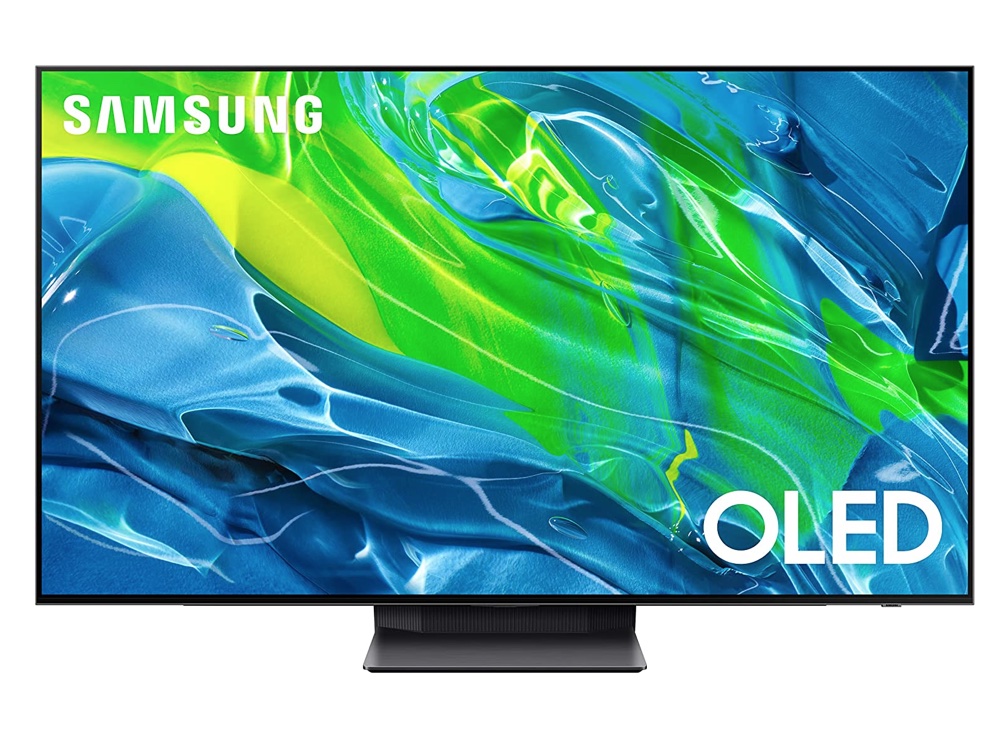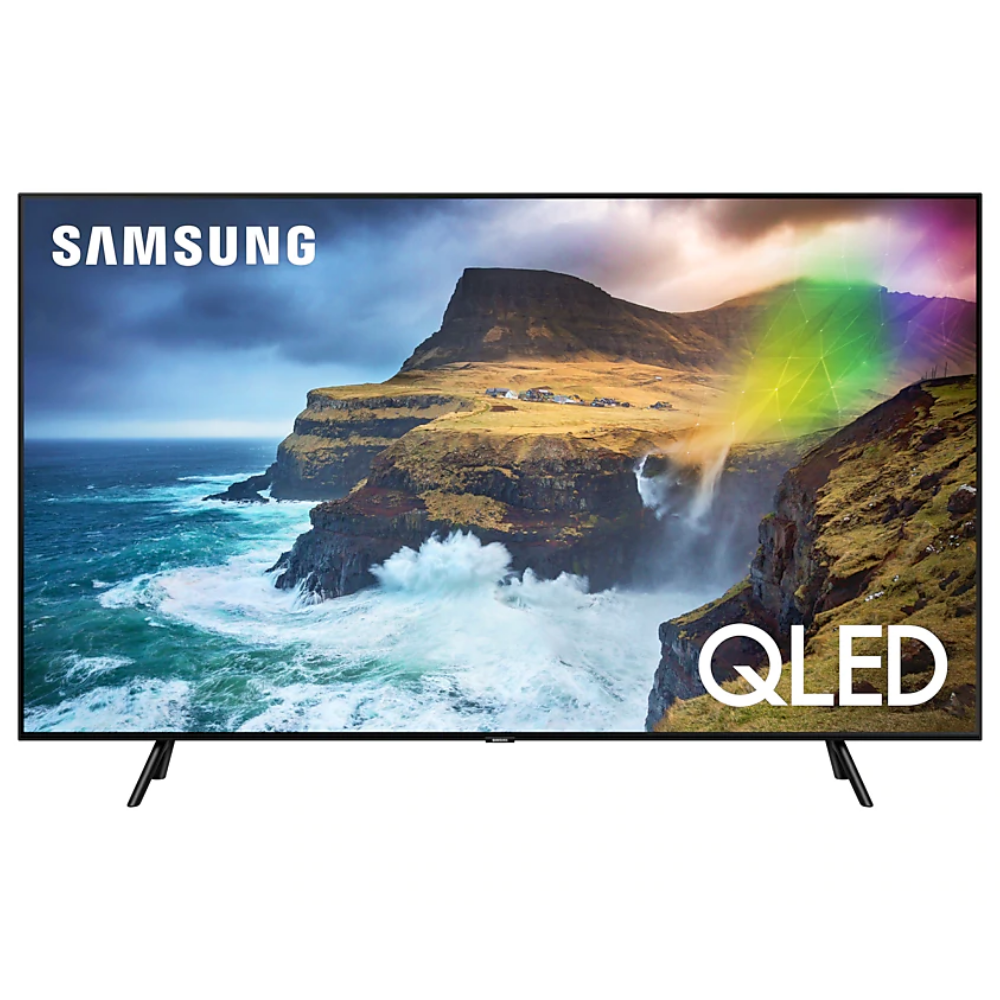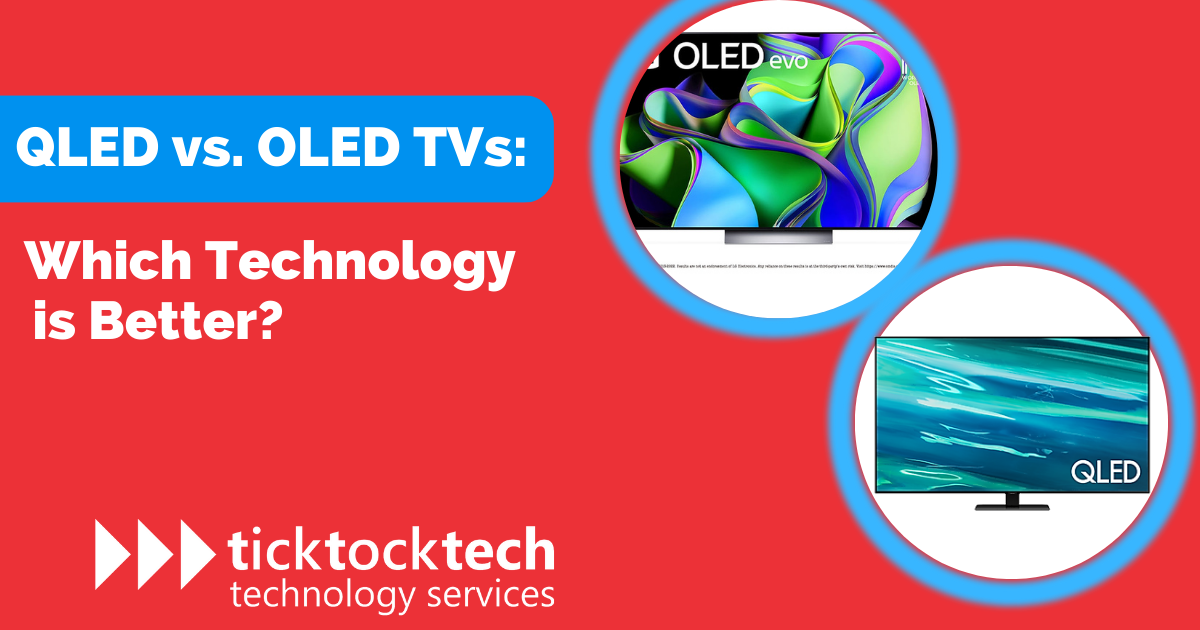Display technologies are a very important part of TVs, monitors, and even computer screens. Not just by size, or how big, but by features like the resolutions, pixels per inch, display types, refresh rate, color distributions, and other display features. Many people of course are conversant with the screen resolution, being 720p or 4K, however, having a top-notch display experience is more than just the resolutions. Many technologies combine to give a crisp, clear, and attractive image rendering on the screen. An important technology that brings about this image rendering is the display type technology. The display types come in different forms and it keeps improving every day. The most common ones are namely LCD (Liquid Crystal Display) LED (Light-emitting Diode) OLED (Organic Light-emitting Diode) and QLED (Quantum Dot Display).
Related: Top 6 Best Budget Gaming TVs in 2023
Currently, the most advanced ones in wide usage in TVs now are the OLEDs and QLEDs. Conflicting thoughts might arise when trying to pick, as both always come with highly packed display features. However, each technology has their strength and lags, this doesn’t make them less of a choice, but it makes the user know what exactly they look for in their TV display. To make your best decision on the Display technology to pick, here are the things you need to know about both technologies.
OLED Technology features
OLED technology is an attractive option for high-quality displays in a variety of consumer electronics applications because of its primary characteristics, which include pixel-level lighting, a wide color gamut, quick response times, tiny and flexible form factors, energy efficiency, and wide viewing angles.

Related: The Best 17-inch Gaming Laptop in 2023
Fast Refresh Rate
OLED displays’ quick response times allow them to switch between pictures quickly, which lessens motion blur and improves clarity. As a result, users will experience less ghosting and lag while playing fast-paced video games or watching fast-paced videos. OLED displays’ quick response times enable more accurate and responsive dynamic content, creating an immersive and smooth viewing experience.
Related: What is refresh rate and how does it affect the gaming experience?
The seamless transition between frames and the fluid movement of on-screen action are just two examples of how OLED’s quick response times improve the overall visual performance and make it a desirable option for applications that need quick and precise image rendering.
Wide viewing angles
OLED panels, in contrast to several other display technologies, maintain their visual quality even when seen at an angle. Multiple viewers will therefore be able to appreciate the same accurate and brilliant colors without noticeably changing the contrast or losing clarity. OLED displays provide an immersive and pleasurable viewing experience whether you’re standing in front of the panel or looking at it from the sides.
See Also: Asus Zenbook 14 OLED
OLED technology’s broad viewing angles make it perfect for scenarios when viewers aren’t always in the best viewing position, such as group presentations or content sharing. No matter where they are about the display, everyone will be able to enjoy the same high-quality graphics.
Energy efficiency
OLED displays can switch off individual pixels to produce complete blacks and save electricity, unlike conventional LCDs that need a backlight to illuminate the entire panel. OLED displays use considerably less energy when showing material with dark or black backgrounds since the black pixels are left unlit.
In addition to extending the battery life of portable devices like smartphones and tablets, this effective energy utilization also lowers the power requirements of larger equipment like televisions. OLED displays substantially reduce overall energy consumption by using less power while displaying dark scenes or elements, making them a more environmentally friendly and sustainable display option.
Pixel-Level Lighting
OLED displays can offer unmatched contrast ratios and great image quality thanks to pixel-level illumination. A pixel that is turned off creates true blacks by emitting zero light, creating infinite contrast and enriching the visual experience as a whole. This skill enables the accurate portrayal of delicate shades and nuances in addition to brilliant and lifelike hues.
Related: Apple Vision Pro – Future of visual technology
OLED displays can produce higher levels of brightness when required thanks to the fine control over each pixel’s illumination. With the aid of this technology, the display can faithfully depict highlights and bright sceneries, resulting in a lively and engaging viewing experience.
Wide Color Gamut
OLED displays offer vivid and lifelike color representation thanks to their ability to reproduce a wide variety of hues. OLED screens deliver images that are detailed, accurate, and visually enticing because of their capacity to display a wider variety of hues, tints, and tones.
Their broad color gamut guarantees that information seems rich and true to life whether you’re watching movies, looking at images, or performing graphically demanding jobs. OLED displays are particularly well-suited for applications where color accuracy and richness are critical, such as multimedia consumption, content production, and gaming, because of this capability, which improves the whole visual experience.
QLED Technology Features

Quantum Dots
Utilizing quantum dots is a distinctive aspect of QLED (Quantum Dot Light Emitting Diode) display technology. Due to light stimulation, quantum dots, which are small nanocrystals, generate distinct colors. The wide color range and high level of color realism produced by QLED displays are made possible by this feature.
QLED displays’ ability to provide vivid, lifelike images with saturated, rich colors is made possible by the incorporation of quantum dots. A wider range of hues, tints, and tones are produced by the quantum dots’ unique wavelengths of light emission. The visual experience is improved overall because of the wider color gamut’s capacity for more subtle and accurate color representation.
HDR (High Dynamic Range)
An image’s contrast and color accuracy are improved with HDR, creating more realistic and realistic-looking pictures. A more dynamic and lifelike viewing experience is produced by QLED displays with HDR, which can represent a wider range of brightness levels, from deep blacks to dazzling whites.
This increased contrast ratio reveals finer details in the image’s darkest and lightest areas, bringing out textures and subtle nuances that could otherwise be lost. With QLED’s support for HDR technology, appropriate material, like HDR videos or games, may be fully appreciated.
Brightness
The remarkable brightness of QLED displays makes them suitable for a variety of viewing settings, including well-lit rooms or locations with ambient light. Content is colorful, vibrant, and easily readable even in bright lighting thanks to the high brightness levels of QLED displays.
See Also: MSI Stealth 16 studio Review
Quantum dots’ exceptional ability to emit light and improvements in LED backlighting technology are what give QLED displays their amazing brightness. Intense light output from these displays can provide images with vivid colors and increased luminance.
Long time usage
The long operational life of QLED displays ensures continuous performance and visual quality over a lengthy time. Numerous reasons, including the use of inorganic quantum dots, which are more robust and resistant to deterioration over time, can be credited for this lifetime.
QLED screens give users a dependable and long-lasting display option because of their increased lifespan. QLED displays are a great investment because of their strength and longevity, especially for those looking for a display that can survive heavy use and maintain its visual perfection over time.
OLED vs QLED: Technology difference (Tables)
| OLED (Organic Light Emitting Diode) | QLED (Quantum Dot Light Emitting Diode) | |
| Lighting | Each pixel emits its own light | LED backlighting with quantum dot layer |
| Contrast | Infinite contrast ratio | High contrast ratio |
| Black Levels | True blacks with pixel-level control | Very deep blacks with local dimming |
| Brightness | Lower peak brightness compared to QLED | Higher peak brightness |
| HDR Support | Excellent HDR performance | Good HDR performance |
| Lifespan | Slightly shorter lifespan compared to QLED | Longer lifespan |
| Price | Generally, more expensive | Generally, more affordable |
OLED Vs QLED: Which is better?
Even though both have wide-angle views, fast response rates, wide color saturations, and are both energy efficient, there is still a difference that differentiates them alongside your purpose. If you are buying for gaming, the OLED TV is the best for that in 2023. This is because OLED displays often perform exceptionally well in gaming based on their capabilities, which include quick response times, pixel-level lighting control, wide viewing angles, and outstanding HDR performance. These qualities contribute to a visually appealing and intensely engaging gaming experience.
Also, if you are buying for a large room viewing, which requires more high definition and wide-angle view, both are good, but the QLED will provide more brightness especially if the viewing point is distant from the TV. Due to their increased peak brightness, wide color gamut, and strong HDR performance, QLED displays are typically an excellent fit for large-room movies, football, or viewing TVs. These qualities help create an engaging and visually appealing movie experience.
For a display type considering the price and affordability in 2023, then you should go for QLED, for both gaming and large rear view, as it serves the purpose (moderately for gaming) at an affordable price. Generally, the OLED is considered the best option for whatever you want to use the TV for in 2023, bar the high price and brightness.
FAQs
QLED TVs typically perform well in HDR, but they do not reach the same level of performance as OLED TVs. This is because OLED TVs have perfect blacks, which allows them to produce a wider range of contrast.
Both QLED and OLED TVs are still relatively new technologies, and they are both constantly evolving. We can also expect to see both technologies become more affordable. As the demand for these TVs increases, the prices are likely to come down.
MicroLED TVs are a new type of TV that uses microscopic LEDs to produce their images. This results in a TV that has even better picture quality than OLED TVs. However, MicroLED TVs are still in their early stages of development, and they are not yet available to the public.
Conclusions
OLED provides outstanding image quality with rich black levels, limitless contrast, and wide viewing angles. QLED is ideal for well-lit areas due to its increased peak brightness, rich colors, and strong HDR performance. Due to its quick response times and ability to customize illumination at the pixel level, OLED is preferred for gaming, although QLED has advantages like increased brightness and a wider color gamut. OLED displays may be prone to burn-in, although QLED displays are more energy-efficient. Make an informed choice by taking into account aspects like desired visual quality, gaming requirements, energy efficiency, durability, and budget. You can select the finest TV for your needs by comparing particular models within each technology.

